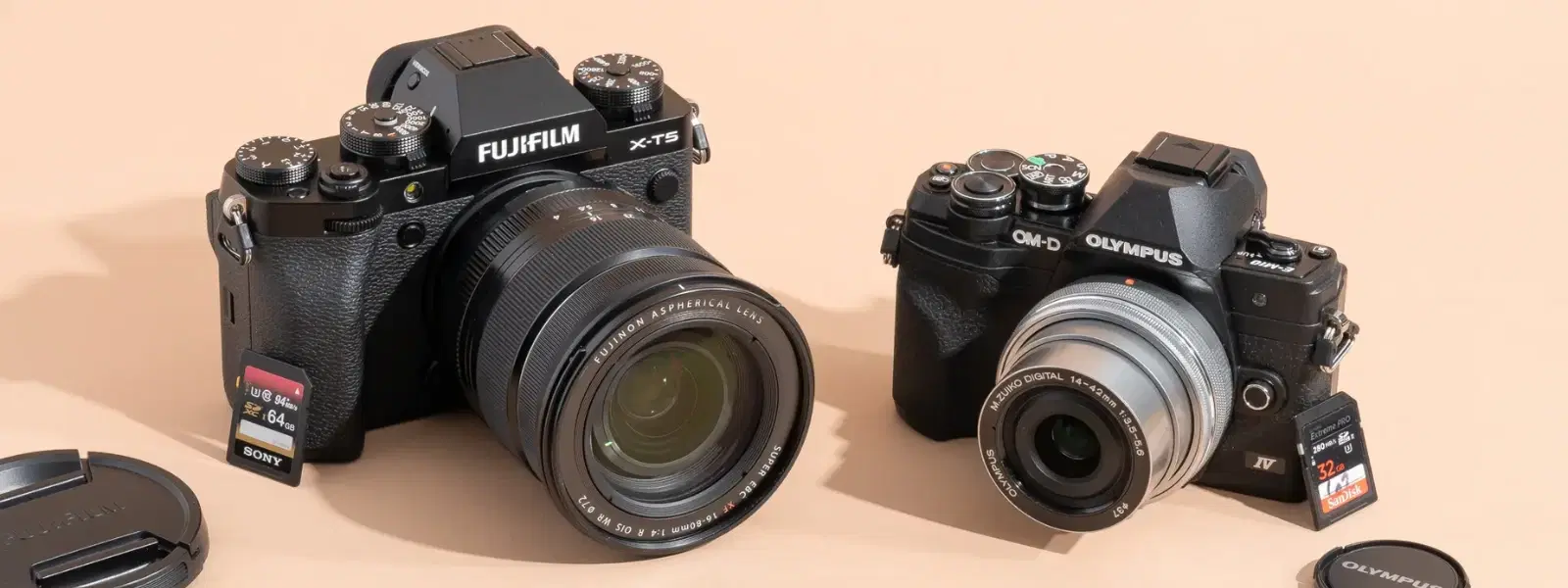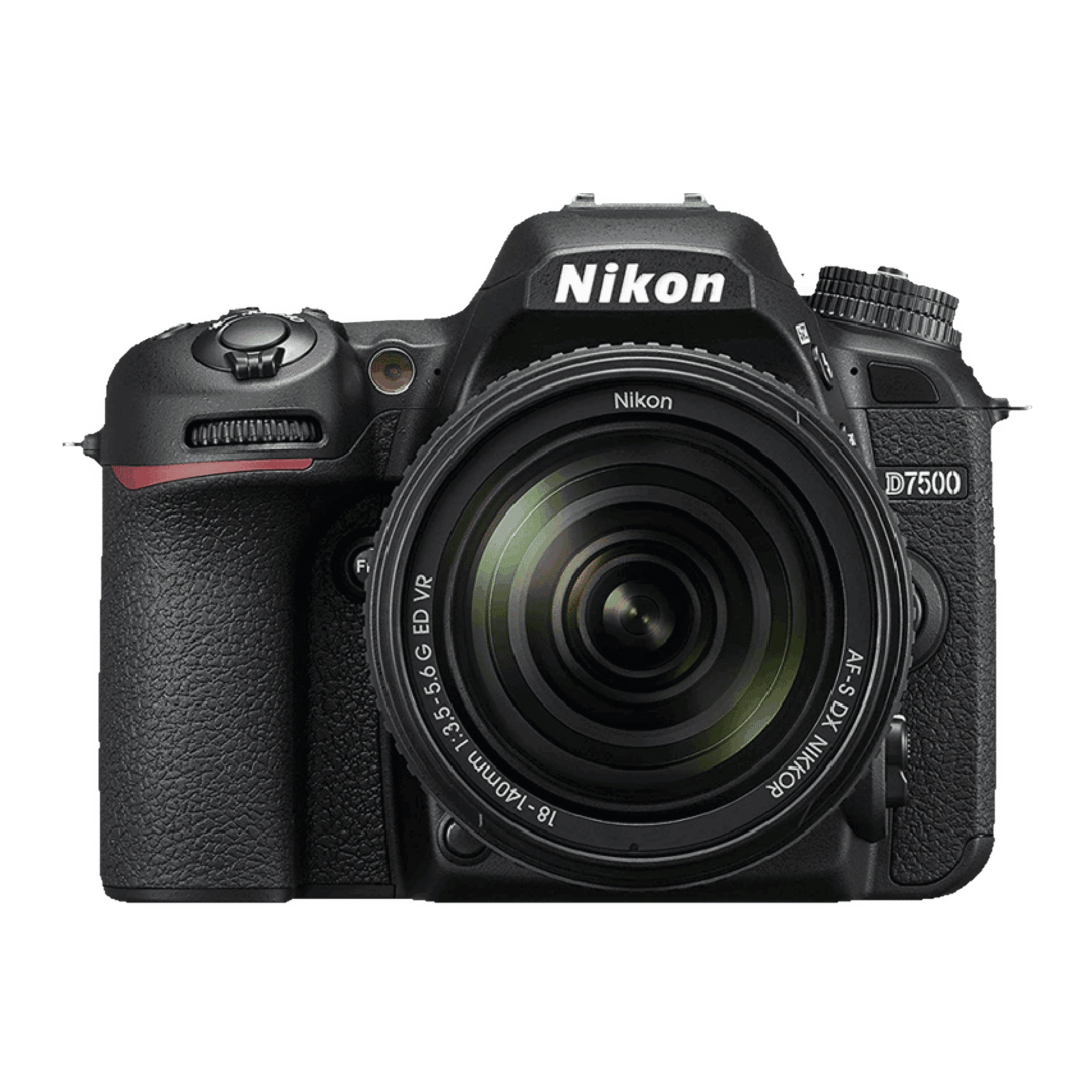
Consumer Electronics
•04 min read

Buy Nikon D7500 20.9MP DSLR Camera (18-140 mm Lens, 23.5 x 15.7 mm Sensor, Game Changing Resolution) online at best prices from Croma. Check product details, reviews & more. Shop now!
Whether you're capturing breathtaking wildlife shots, zooming into distant landscapes, or photographing fast-paced sports, having the right telephoto lens can truly elevate your photography game. Telephoto lenses offer the clarity and zoom range that allow you to get close to the action, even from far away. This blog addresses your most frequently asked questions about finding the best DSLR telephoto lens, guiding you through lens types, features, price points, and tips tailored to your photography style and budget.
Telephoto lenses are distinct for their ability to capture subjects from a distance with exceptional detail. They feature long focal lengths that can vary widely, allowing you to reach far-off subjects that would normally be out of frame. The extended zoom capabilities make these lenses indispensable for photographers who focus on distant and moving subjects, as they help bring even the smallest details into sharp focus.
Telephoto lenses are a must-have for many photography enthusiasts. They are particularly popular with wildlife photographers, who rely on their extended reach to capture animals in their natural habitats. Additionally, sports photography benefits greatly from these lenses, as they help to capture fast-moving action without having to be in the thick of the play. Bird photography and long-range scenic shots are other common applications, making them a versatile addition to any DSLR camera kit.
The choice between prime and zoom telephoto lenses depends on your specific needs. Prime telephoto lenses offer a fixed focal length, often resulting in superior image quality and wider apertures for low light performance. On the other hand, telephoto zoom lenses for DSLR provide versatility by offering variable focal lengths, making them suitable for a range of shooting scenarios. High-quality telephoto lenses in both categories are designed to deliver clarity, whether you’re aiming for atmospheric background bokeh or the sharp details needed for action shots.
Choosing between professional telephoto lenses and more affordable DSLR telephoto lens options comes down to your level of usage and budget. Professional-grade lenses are built with advanced features such as excellent image stabilization, superior optical elements, and rugged construction suitable for demanding environments. In contrast, entry-level models aim to provide excellent value without compromising the core functionalities, making them a great choice for budding photographers or enthusiasts exploring wildlife and sports photography.
The focal length of a telephoto lens determines how far into the scene you can capture. Longer focal lengths enable you to photograph distant subjects, while the aperture plays a key role in low-light conditions and in achieving that sought-after background blur. Many photographers wonder why an F2.8 lens is more expensive. The reason is that a wider aperture allows more light to enter the camera, resulting in sharper images even in dim conditions and creating a beautiful separation between subject and background.
Ensuring compatibility between your DSLR and the telephoto lens is essential. Different camera brands such as Nikon and Canon often require lenses that are specifically designed to complement their sensor and body technology. For example, those searching for a Nikon telephoto lens for wildlife or a Canon telephoto lens should confirm that the lens mount and technology sync seamlessly with the camera’s imaging system. This careful matching can mean the difference between a technically sound shot and a missed opportunity.
When investing in a telephoto lens, consider features such as optical stabilisation and robust build quality. Image stabilisation is particularly useful when shooting at long ranges where even slight camera shake can lead to blur. A weather-resistant build ensures that your lens endures environmental challenges, providing reliability and longevity—key aspects when you are out in the field or at a live sports event.
For those passionate about capturing the beauty of wildlife, selecting a DSLR camera lens for wildlife is crucial. Lenses designed for bird photography or general wildlife require long-range capabilities combined with silent operation to avoid disturbing your subjects. The ability to capture fast-moving animals in low-light conditions is something that can be achieved with features such as a wide aperture and superb autofocus performance.
Action photography demands lenses that offer a fast autofocus system, wide apertures, and rapid burst capabilities. The best DSLR lens for sports photography should swiftly adjust to fast-moving subjects while maintaining crisp image details. Whether you’re at a local match or a large sporting event, a quality telephoto lens will help you freeze moments of peak action, all while providing the clarity and precision needed to record every detail.
Not every photographer is ready to invest in high-end, professional telephoto lenses immediately. For many beginners, exploring affordable DSLR telephoto lens options that do not compromise too much on quality can be the ideal start. These cost-effective alternatives can still provide impressive performance for wildlife and long-range photography, ensuring that even novices can enjoy exploring their creative potential without overspending.
Insight Corner
Did you know? Lenses with a wider aperture, like f/2.8, not only perform better in low light but also create stunning background blur (bokeh) for professional-grade images.
The best telephoto lens depends on your style of photography, budget, and camera brand. Consider your needs—whether it’s wildlife, sports or long-distance photography—and choose accordingly.
F2.8 lenses are more costly because their wider aperture allows more light to be captured. This results in sharper images in low-light situations and beautiful background separation, which is why they are highly sought after.
Wildlife photographers typically lean towards lenses with long focal lengths. These options help in capturing distant subjects, making them indispensable for bird photography and general wildlife shooting.
Telephoto lenses that offer an extended zoom range, combined with effective image stabilisation, are ideal for long-distance photography. Their design ensures you capture clear images even from far away.
Telephoto lenses are essential tools for photographers aiming to capture distant subjects with clarity and precision. This guide has explored the unique characteristics of telephoto lenses, from their application in wildlife and sports photography, to the differences between prime and zoom options, and professional versus entry-level models. Whether you're a budding photographer looking for affordable options or a seasoned professional seeking advanced features, choosing the right telephoto lens can truly transform your photographic journey.
At Tata Neu, we believe in making your shopping experience as seamless and rewarding as possible. As you explore your photographic passion, remember that you can earn NeuCoins with every transaction, whether you're shopping online or in-store. These rewards can help you invest more in your creative pursuits, adding further value to your experience. The trust and support provided by Tata Neu ensure that every purchase is backed by the confidence of a seamless shopping journey.